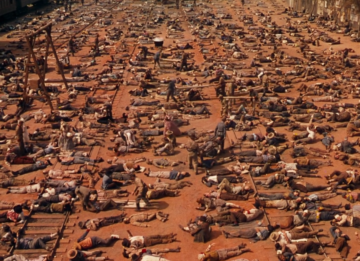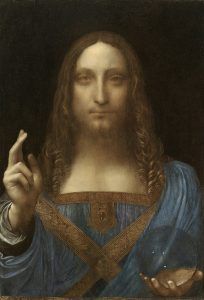by Brooks Riley
Something odd happens when I look at the elder Pieter Bruegel’s paintings: I experience a jolt of vertigo, as though I’d stepped out on a ledge somewhere—not too high up, but high enough to initiate a physical reaction more like titillation than terror. I didn’t notice this right away: For a long time, I was too busy taking in all the business going on in those paintings: the crowds, the tussles and bustle of the marketplace, the hawkers, the wagons, the houses, the animals, and in some of his works a topography rather alien to his own very flat province of North Brabant in the Netherlands. A master of ‘everything everywhere all at once,’ Bruegel knew how to crowd a wooden panel.

In The Fight between Carnival and Lent, faced with a multitude of finely-rendered characters alive with attitude, it’s easy to be distracted from the shot itself—its acute angle, its distance from the action, its extended scope and high horizon achieved through elevation. This is a classic content-over-form dialectic that faces every viewer looking at a painting. What am I seeing? What am I supposed to see? Where am I seeing from?
In this case ‘where am I seeing from’ has everything to do with ‘what am I seeing’’: It’s the high oblique angle that enables the viewer to take in all those individuals spread out over the market square. (An AI command to make each character look up at the painter, might force the viewer to think about where Bruegel is situated as he paints, even if he’s up there only in his imagination. It’s like the fourth wall: you’re unaware of it until a character turns and speaks to you directly.)
 A cinematographer would recognize this as a crane shot, or its replacement, the drone shot. This crane or drone doesn’t move. It defines the POV (point of view) of the painter, and shows how far his perspective can reach and how much he can cram into the in-between, that 2D surface which expands vertically with every higher angle of his POV, as in this crane shot from Gone with the Wind. Read more »
A cinematographer would recognize this as a crane shot, or its replacement, the drone shot. This crane or drone doesn’t move. It defines the POV (point of view) of the painter, and shows how far his perspective can reach and how much he can cram into the in-between, that 2D surface which expands vertically with every higher angle of his POV, as in this crane shot from Gone with the Wind. Read more »


